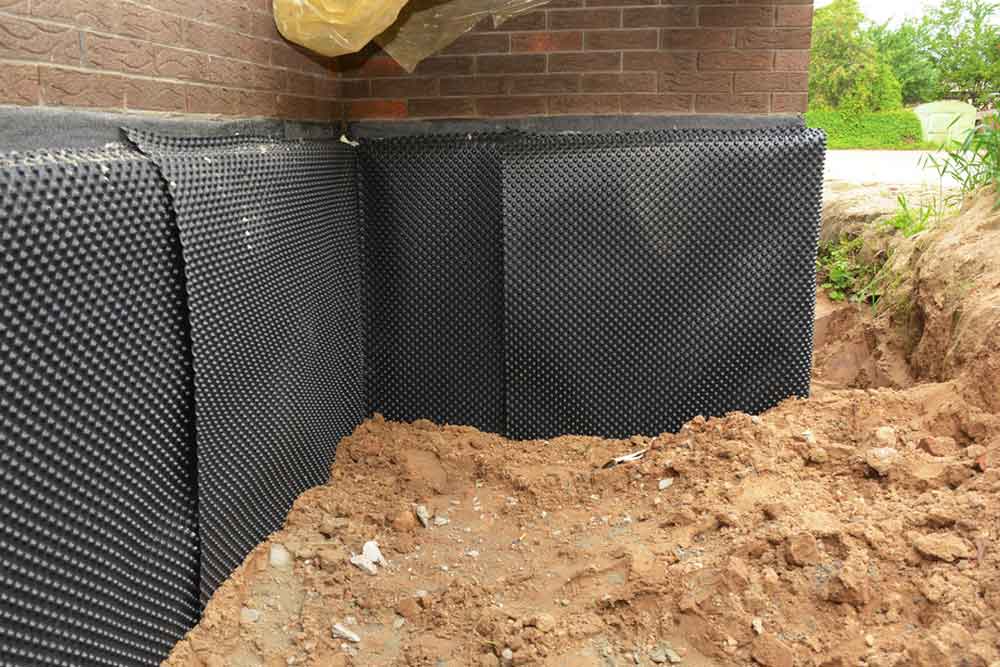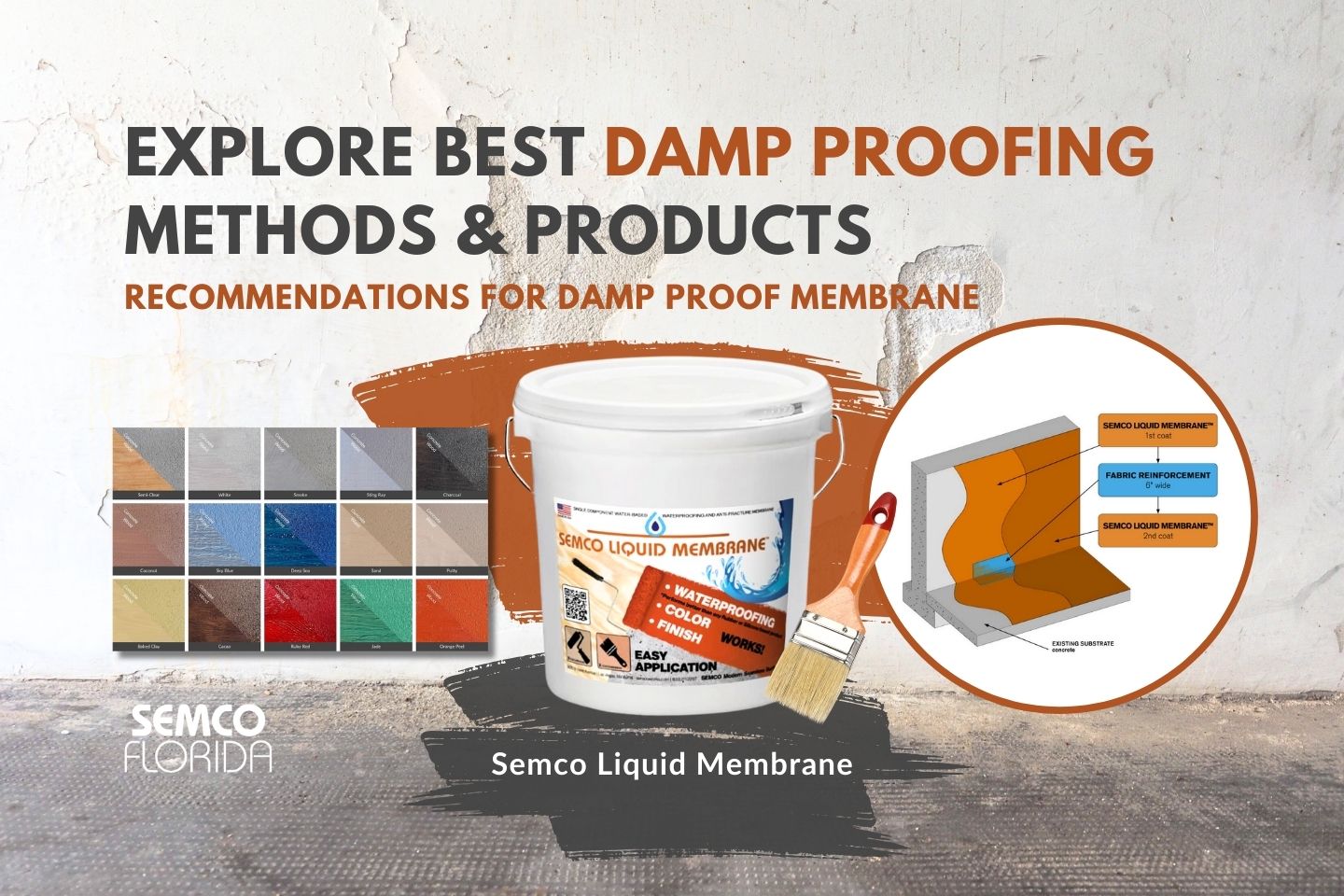Checking Out the Numerous Techniques and Solutions for Effective Damp Proofing
Moisture in buildings postures significant difficulties to both architectural stability and indoor air quality. Numerous strategies and services have actually arised to battle this pervasive problem. From standard damp-proof membrane layers to cutting-edge chemical treatments, each method offers unique advantages. Understanding these options is crucial for reliable moisture control. Nevertheless, choosing the best solution relies on details structure problems and needs, prompting more exploration into the most efficient wet proofing approaches offered.
Recognizing the Root Causes Of Wetness
Although wetness can emerge from different sources, understanding these causes is essential for reliable remediation. Generally, wetness stems from 3 main sources: climbing wet, passing through wet, and condensation. Rising damp takes place when groundwater travels up with permeable products, such as brick or rock, frequently because of an absence of a reliable barrier (damp specialist newcastle). Permeating damp is generally triggered by external elements, consisting of roofing leaks, damaged rain gutters, or damaged wall surfaces, allowing water to penetrate a building. Condensation, on the other hand, results from excess dampness airborne, frequently intensified by poor air flow and temperature level differences, bring about water beads basing on surfaces. Determining these underlying issues is important, as each sort of wetness needs a tailored approach for remediation. Appropriate analysis helps in figuring out one of the most reliable solutions, ultimately safeguarding the structural stability of a building and improving indoor air high quality
Standard Damp-Proof Membrane Layers

Chemical Damp-Proofing Solutions
Chemical damp-proofing options use a cutting-edge technique to stop moisture intrusion in buildings. These methods generally include the application of fluid chemicals that permeate masonry and develop an obstacle versus increasing moist. Typically utilized chemicals include silanes, siloxanes, and other water-repellent agents that respond with surface area products to produce a hydrophobic layer.The application process usually requires drilling openings into the wall surfaces, infusing the chemical remedy, and allowing it to heal. This method is particularly useful for older frameworks where conventional damp-proof membranes might be unwise. Moreover, chemical damp-proofing can be less turbulent and extra cost-effective than extensive improvement projects.While efficient, these services rely on appropriate application and environmental problems for peak performance. Routine upkeep and tracking are necessary to ensure the durability of the damp-proofing treatment. On the whole, chemical damp-proofing stands for a versatile choice for securing buildings against moisture-related damages
Tooth Cavity Wall Construction Strategies
Cavity wall building strategies provide numerous benefits, particularly in moisture control and power effectiveness. By integrating an air gap in between 2 layers of masonry, these walls efficiently minimize water ingress while enhancing insulation. This combination not just shields structures from dampness however likewise adds to minimized power consumption.
Benefits of Cavity Walls
When considering efficient wet proofing methods, the benefits of dental caries wall surfaces stand out prominently. Tooth cavity walls contain 2 separate layers, creating an air gap that successfully minimizes dampness infiltration. This layout minimizes the threat of dampness, as the outer wall serves as an obstacle against rain and water ingress. Furthermore, cavity walls improve thermal insulation, which adds to energy performance by lowering warmth loss. They likewise give audio insulation, aiding to produce a quieter indoor environment. Moreover, the air space enables for ventilation, which aids in moisture control and reduces the likelihood of mold growth. These benefits not just boost the general comfort of a building but additionally add to its longevity and architectural integrity.
Wetness Control Strategies
Effective wetness control strategies are essential in tooth cavity wall surface building to ensure long-term security versus dampness. One key approach includes the incorporation of weep holes, which facilitate water drainage from the dental caries, preventing build-up. In addition, using breathable membrane layers can aid manage wetness degrees while allowing caught vapor to escape. Proper placement of insulation is additionally important, as it should not obstruct drain paths. Furthermore, making certain that the outer leaves of the tooth cavity wall surface are created with waterproof materials enhances general durability. Regular maintenance checks are necessary to determine any kind of blockages or damage early, protecting the framework's honesty. Inevitably, a mix of these techniques develops a durable defense versus wetness invasion in cavity wall surfaces.
Insulation and Power Efficiency
Insulation plays an important role in boosting power performance within tooth cavity wall building. By integrating insulating materials, these wall surfaces develop a thermal obstacle that minimizes heat loss and reduces power usage. Reliable insulation not just assists maintain a stable interior temperature level however likewise reduces the risk of dampness, as it prevents condensation within the wall surface dental caries. Numerous methods, such as using inflexible foam boards or mineral woollen, can be utilized to achieve perfect insulation performance. In addition, appropriate setup is important to guarantee that gaps and gaps are reduced, which can or else jeopardize energy performance. Eventually, a well-insulated cavity wall surface adds significantly to general sustainability and reduces cooling and heating costs for property owners.
Exterior Damp Proofing Techniques
Outside damp proofing approaches are crucial for securing structures from dampness seepage. Two effective methods include the application of waterproof membranes and the installment of French drains pipes. These solutions assist reduce water buildup and protect the integrity of buildings.
Waterproof Membrane Layer Application
While different approaches exist for avoiding moisture access, the application of water resistant membranes stays an extremely reliable exterior moist proofing strategy. These membrane layers are usually made from products such as polyethylene, rubber, or modified bitumen, supplying a durable obstacle versus water penetration. The installation process includes applying the membrane layer to the external surfaces of wall surfaces or foundations, guaranteeing total insurance coverage to prevent leaks. Appropriate attachment and securing at joints are essential to making best use of effectiveness. Waterproof membranes can be applied in various forms, including liquid finishes and sheet membrane layers, permitting for adaptability based upon the details needs of the framework. This method not only safeguards buildings from moisture yet likewise improves their durability and structural integrity.
French Drainpipe Installment
One reliable approach for handling groundwater and stopping wetness build-up around a building's structure is the setup of a French drain. This drain system consists of a trench loaded with gravel and a perforated pipe that redirects surface area water away from the structure. Appropriate setup calls for mindful preparation, ensuring that the drainpipe inclines away from the framework to assist in suitable water flow. Additionally, the area of the drainpipe is vital; it needs to be positioned in areas vulnerable to pooling or excess dampness. Regular upkeep, including clearing up debris from the crushed rock and making certain the pipe continues to be unblocked, is vital for lasting effectiveness. Eventually, a well-installed French drainpipe can significantly reduce the threat of water-related concerns in structures and basements.
Interior Waterproofing Techniques
Interior waterproofing techniques are important for shielding a structure's inside from moisture infiltration and potential water damages. These techniques generally entail the application of specific products and techniques made to create a dampness barrier within the structure. One common approach is making use of water-proof coverings or sealants on walls and floors, which protect against dampness from permeating surfaces.Additionally, installing interior water drainage systems, such as sump pumps, can effectively manage water buildup in basements and creep rooms. One more method entails using vapor barriers, which are installed to hinder moisture movement from the ground right into living spaces.Moreover, resolving any kind of fractures or spaces in walls or structures with appropriate sealers guarantees a thorough protection versus water breach. By implementing these interior waterproofing techniques, residential or commercial property owners can significantly decrease the danger of mold and mildew growth, structural damage, and other moisture-related issues. Proper execution of these strategies is important for long-term protection and structure stability.
Normal Upkeep and Evaluation Practices
Routine upkeep and assessment methods are essential for guaranteeing the lasting effectiveness of moist proofing options in any kind of structure. Regular checks make it possible for residential or commercial property owners to identify very early indicators of dampness invasion, such as peeling off paint, mold and mildew growth, and moldy odors. These indications can indicate underlying concerns that call for immediate attention.Inspections need to be conducted at least annually, concentrating on at risk areas like cellars, crawl areas, and exterior wall surfaces. During these assessments, home owners must analyze sealers, drain systems, and ventilation to validate they function correctly.Additionally, keeping seamless gutters and downspouts is crucial, as stopped up systems can result in water accumulation near the structure. Carrying out a routine upkeep routine, along with timely fixings, can significantly expand the lifespan of wet proofing measures and secure the structural stability of the structure. Proactive steps eventually add to the total health and wellness of the living environment.
Often Asked Inquiries
How Much Time Does Damp Proofing Commonly Last?
The duration of moist proofing effectiveness varies, generally lasting between 20 to half a century. Elements such as application quality, environmental problems, and maintenance techniques greatly affect the longevity of the moist proofing therapy.

Can I Damp Evidence My Home Myself?
The individual contemplated the expediency of DIY damp proofing. With correct study and the ideal materials, it is feasible. However, they additionally identified the relevance of specialist assistance to ensure long-lasting efficiency and protect against future problems.
What Are the Signs of Inefficient Damp Proofing?
Indicators of ineffective moist proofing consist of relentless moldy odors, noticeable mold and mildew growth, peeling off paint, wet spots on wall surfaces, and wood decay - mould removal newcastle. Homeowners ought to attend to these concerns quickly to stop more damages and health issues
Does Damp Proofing Affect Indoor Air Top Quality?

Just How Much Does Professional Damp Proofing Expense?
Specialist moist proofing prices vary substantially, usually varying from $1,000 to $5,000 depending on the residential property's dimension, the extent of the damp problem, and picked methods. Each circumstance calls for a customized assessment for exact prices. Frequently, dampness originates from three main resources: rising damp, permeating wet, and condensation. When thinking about reliable wet proofing methods, the benefits of tooth cavity wall surfaces stand out prominently. Exterior damp proofing approaches are vital for safeguarding frameworks from wetness infiltration. While numerous techniques exist for avoiding moisture access, the application of water-proof membrane layers remains a highly reliable exterior wet proofing strategy. Indicators of inadequate wet proofing consist of consistent mildewy smells, visible mold growth, peeling paint, damp patches on walls, and wood decay.